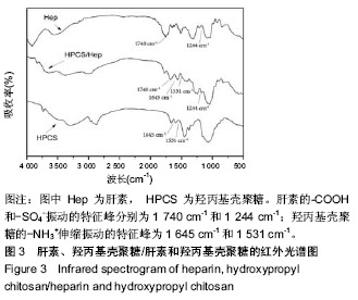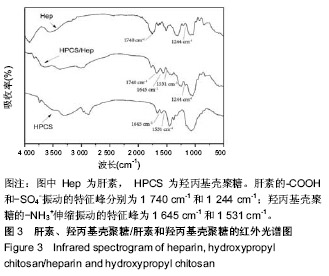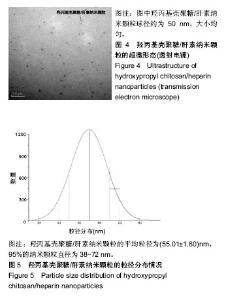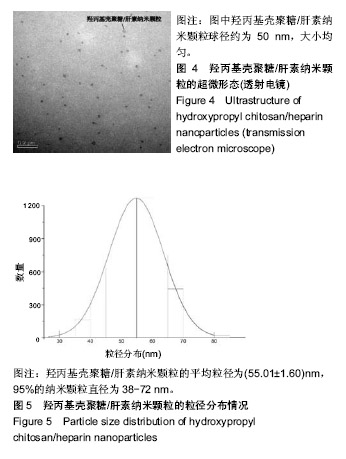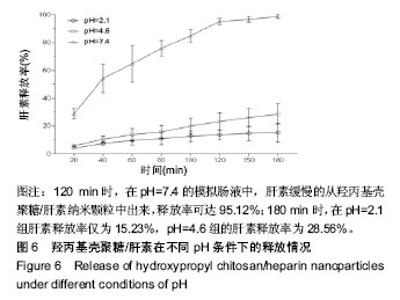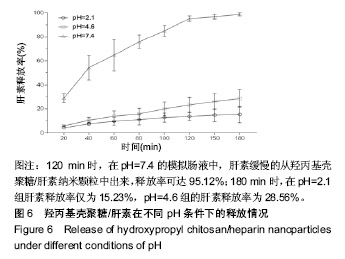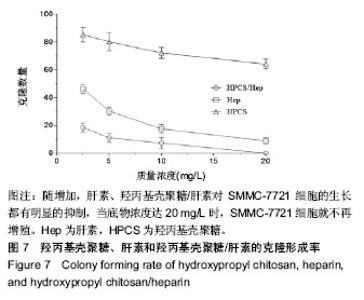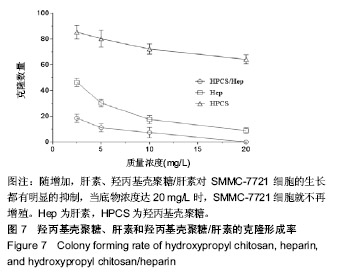| [1]翟原苑,马海平,郑宏,等.肝素与抗凝监测的研究进展[J].临床和实验医学杂志,2018,17(1):111-113.[2]白云飞,房体刚,孙瑞.老年全髋关节置换后利伐沙班与低分子肝素预防深静脉血栓形成及失血情况对比[J].中国组织工程研究,2018, 22(15): 2303-2308.[3]周静,赵国厚,袁开芬,等.肝素监测在老年肺栓塞抗凝治疗中的研究进展[J].中国老年保健医学,2016,14(3):56-58.[4]张佳,刘靖圆,柯小娥,等.肝素在心肺复苏过程中对重要脏器保护作用的研究进展[J].实用心脑肺血管病杂志,2016,24(1):4-6.[5]李美花.低分子肝素制备方法研究进展[J].科技创新与应用,2017, (10):89.[6]吴琪,孙景真.低分子肝素皮下注射方法的研究进展与现状[J].当代护士(下旬刊),2016,(2):6-8.[7]高阳,马海平,郑宏.体外循环下心脏直视手术肝素抗凝管理的研究进展[J].国际麻醉学与复苏杂志,2018,39(5):500-504.[8]袁燕,郑九生.低分子肝素在产科应用中的研究进展[J].现代妇产科进展, 2016,25(8):631-632.[9]池春杰,王常松,李恩有.肝素在脓毒血症治疗中的临床研究现状[J].临床麻醉学杂志,2015,31(7):719-721.[10]张伟杰,刘杏萍,许新劲.普通肝素与低分子肝素对脓毒血症患者肝素结合蛋白浓度的影响对比[J].黑龙江医学, 2017,41(4):341-342.[11]王宇,黄礼年.低分子肝素在恶性肿瘤患者中的应用进展[J].癌症进展,2018,16(2):150-154.[12]Nüße J, Mirastschijski U, Waespy M, et al. Two new isoforms of the human hepatoma-derived growth factor interact with components of the cytoskeleton. Biol Chem. 2016;397(5): 417-436. [13]Fang L, Li G, Liu G, et al. p53 induction of heparin-binding EGF-like growth factor counteracts p53 growth suppression through activation of MAPK and PI3K/Akt signaling cascades. EMBO J. 2001;20(8): 1931-1939.[14]于北凯.低分子量肝素对肝癌细胞株增殖?黏附相关特性的影响及机制研究[D].蚌埠:蚌埠医学院,2014.[15]刘欣悦.质谱联用新技术在低分子肝素药物质量控制方面的应用[D].济南:山东大学,2018.[16]沈腾,徐惠南,翁伟宇,等.低分子肝素肠道吸收促进剂的研究[J].中国药学杂志,2006,41(3):206-209.[17]张海中,黄爱萍.叶酸磁性纳米颗粒载顺铂抑制人喉癌Hep-2细胞生长且无细胞毒性作用[J].中国组织工程研究, 2016,20(8):1111-1117.[18]Berry D, Lynn DM, Sasisekharan R, et al. Poly(beta-amino ester)s promote cellular uptake of heparin and cancer cell death. Chem Biol. 2004;11(4):487-498.[19]Xing J, Deng L, Dong, A. Chitosan/alginate nanoparticles stabilized by poloxamer for the controlled release of 5-fluorouracil. J Appl Polym Sci. 2010;117(4):2354-2359.[20]贾秀鹏,张东生,郑杰,等.As2O3磁性纳米微球的研制及表征[J].东南大学学报(自然科学版),2004,34(6):797-801.[21]刘海蓉,张清卿,周征,等.PHBV/葡聚糖纳米药物载体的制备及表征[J].湖南大学学报(自然科学版),2018,45(6):113-119.[22]董倩倩.透明质酸修饰的CaCO3负载光敏剂及在光动力治疗中的应用[D].哈尔滨:哈尔滨理工大学,2017.[23]Mohanraj VJ, Chen Y. Nanoparticles - a Review. Trop J Pharm Res. 2006;5(1):561-573.[24]Fan L, Zou S, Ge H, et al. Preparation and characterization of hydroxypropyl chitosan modified with collagen peptide. Int J Biol Macromol. 2016;93(Pt A):636-643. [25]Chen S, Li Y, Guo C, et al. Temperature-responsive magnetite/ PEO-PPO-PEO block copolymer nanoparticles for controlled drug targeting delivery. Langmuir. 2007;23(25):12669-12676. [26]赵婧,苗艳青,梁飞,等.温度/pH双重响应型壳聚糖纳米药物载体的制备及性能[J].功能材料,2017,48(8):190-196.[27]贾喜乐,吕辉,宋益民.乙酰水杨酸/氨基多糖复合物纳米粒子的制备与表征及抗血栓形成的作用[J].沈阳药科大学学报, 2017,34(3): 201-206, 228.[28]王建超,余翥,胡艳梅,等.毛花苷C促进肝癌SMMC-7721细胞凋亡及抑制survivin的表达[J].世界华人消化杂志, 2016,24(9):1331-1341.[29]Steinhauser I, Spänkuch B, Strebhardt K, et al. Trastuzumab-modified nanoparticles: optimisation of preparation and uptake in cancer cells. Biomaterials. 2006;27(28):4975-4983.[30]Panagi Z, Beletsi A, Evangelatos G, et al. Effect of dose on the biodistribution and pharmacokinetics of PLGA and PLGA-mPEG nanoparticles. Int J Pharm. 2001;221(1-2):143-152.[31]冯炜玮.去甲斑蝥素-羟丙基壳聚糖纳米粒的制备及其体外抗肿瘤性能研究[D].淄博:山东理工大学,2012.[32]Snehalatha M, Venugopal K, Saha RN, et al. Etoposide loaded PLGA and PCL nanoparticles II: biodistribution and pharmacokinetics after radiolabeling with Tc-99m. Drug Deliv. 2008;15(5):277-287. [33]张媛,纳涛,吴彦霖,等.达肝素钠和肝素钠对小鼠毒性的比较[J].中国药理学与毒理学杂志,2016,30(11):1172-1175.[34]刘晋仙,李玮涛,张在忠,等.低分子肝素药理学机制及适应证研究进展[J].药学研究,2015,34(7):420-421. |
